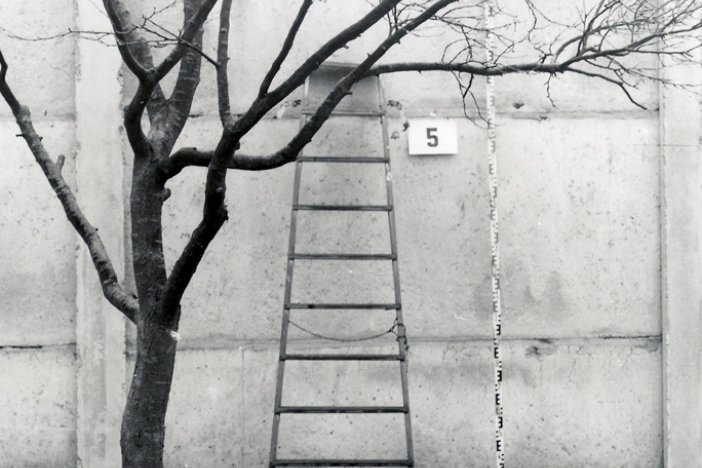After the Fall is Before the Occupation
On the Trail of the “East Side Wagenburg” Caravan Park
Until the fall of the Wall, the Spreeuferpark at the East Side Gallery was part of the so-called death strip, which formed part of the border fortifications of the Berlin Wall. This border strip became a large wasteland in the middle of the city after November 9, 1989. In 1991, Berlin's largest caravan park was built there, and its residents have immortalized themselves in their own unique way on the Wall.By Verena Dieck and Maximilian Honig
Iron gate in the Berlin Wall with a view of the “East Side Wagenburg,” July 1996 (Photo: Scrapbook of the police and fire departments in Friedrichshain, FHXB Friedrichshain-Kreuzberg Museum - Kurt Bothe)
“Wagenburgen” are autonomous housing estates made up of mobile vehicles such as caravans and campers. They can vary widely in terms of location and size, social composition and agreements regarding parking spaces and basic use - from illegal squatting to rental agreements. Since the 1970s, the groups behind them have been concerned with creating free spaces and realizing alternative lifestyles away from state and capitalist constraints. To this day, autonomous spaces have repeatedly been the subject of political and social disputes. Since then, they have been as much a part of the cityscape as have their evictions by the police.
Such an autonomous form of housing emerged along the East Side Gallery starting in 1991. It consisted of a conglomerate of many small caravans, into which more and more people moved. An increasing lack of space led to social tensions. The growing drug trade and the garbage problem exacerbated the situation. Interior Senator Jörg Schönbohm and State Secretary of the Interior Kuno Böse urged the dissolution of the caravan park due to the worsening situation.
When 19-year-old Andrei Lapatin was stabbed to death on the grounds of the caravan park at the end of March 1996, the police carried out numerous raids. The press reported suspected cases of tuberculosis. On July 17, 1996, the East Side Wagenburg was finally cleared by the police. Today, the Spreeuferpark no longer shows this past. Only the inconspicuous iron gate in the Wall is a reminder of the caravan park at the East Side Gallery.
This text is published under the Creative Commons license "CC BY-NC-ND 4.0". You may share the text by mentioning the license CC BY-NC-ND 4.0 and the authors. Copyright information for the images can be found in the image captions.


